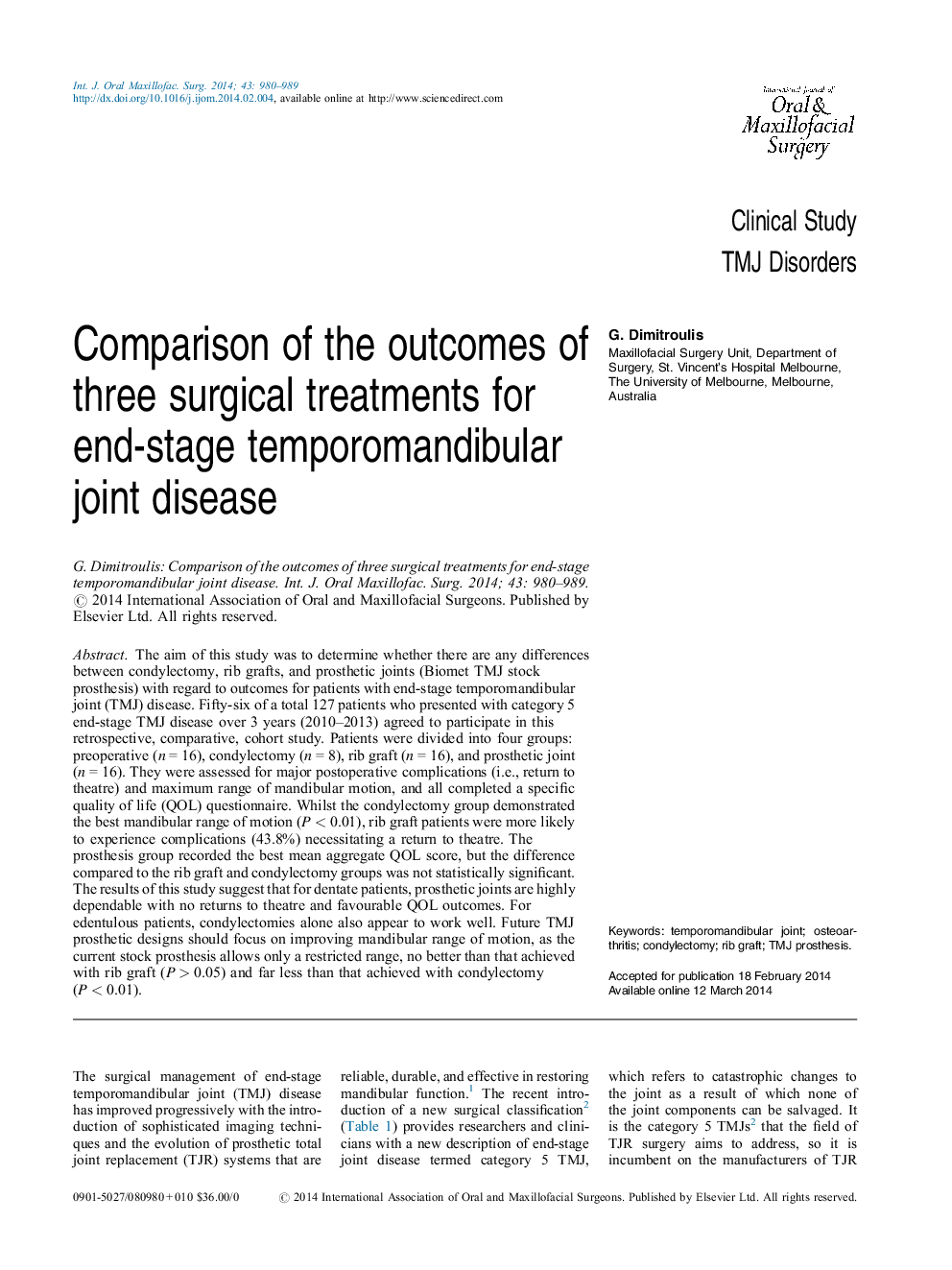| Article ID | Journal | Published Year | Pages | File Type |
|---|---|---|---|---|
| 3132151 | International Journal of Oral and Maxillofacial Surgery | 2014 | 10 Pages |
The aim of this study was to determine whether there are any differences between condylectomy, rib grafts, and prosthetic joints (Biomet TMJ stock prosthesis) with regard to outcomes for patients with end-stage temporomandibular joint (TMJ) disease. Fifty-six of a total 127 patients who presented with category 5 end-stage TMJ disease over 3 years (2010–2013) agreed to participate in this retrospective, comparative, cohort study. Patients were divided into four groups: preoperative (n = 16), condylectomy (n = 8), rib graft (n = 16), and prosthetic joint (n = 16). They were assessed for major postoperative complications (i.e., return to theatre) and maximum range of mandibular motion, and all completed a specific quality of life (QOL) questionnaire. Whilst the condylectomy group demonstrated the best mandibular range of motion (P < 0.01), rib graft patients were more likely to experience complications (43.8%) necessitating a return to theatre. The prosthesis group recorded the best mean aggregate QOL score, but the difference compared to the rib graft and condylectomy groups was not statistically significant. The results of this study suggest that for dentate patients, prosthetic joints are highly dependable with no returns to theatre and favourable QOL outcomes. For edentulous patients, condylectomies alone also appear to work well. Future TMJ prosthetic designs should focus on improving mandibular range of motion, as the current stock prosthesis allows only a restricted range, no better than that achieved with rib graft (P > 0.05) and far less than that achieved with condylectomy (P < 0.01).
